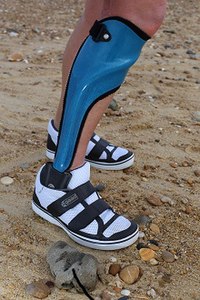
Photo from wikipedia
OBJECTIVE Osteoarthritis (OA) is a degenerative disease that causes serious damage to joints, especially in elderly patients. The aim of study was to demonstrate the effectiveness of intraarticular therapies that… Click to show full abstract
OBJECTIVE Osteoarthritis (OA) is a degenerative disease that causes serious damage to joints, especially in elderly patients. The aim of study was to demonstrate the effectiveness of intraarticular therapies that are currently used or recently popularized in the treatment of OA. DESIGN The baseline values were determined by walking the rats on the CatWalk system. Afterwards, a monosodium iodoacetate (MIA)-induced knee OA model was created with intraarticular MIA, and the rats were walked again on the CatWalk system and post-OA values were recorded. At this stage, the rats were divided into 4 groups, and intraarticular astaxanthin, intraarticular corticosteroid, intraarticular hyaluronic acid, and intraarticular astaxanthin + hyaluronic acid were applied to the groups, respectively. The rats were walked once more and posttreatment values were obtained. Nine different dynamic gait parameters were used in the comparison. RESULTS Significant changes were measured in 6 of the 9 dynamic gait parameters after the MIA-induced knee OA model. While the best improvement was observed in run duration (P = 0.0022), stride length (P < 0.0001), and swing speed (P = 0.0355) in the astaxanthin group, the results closest to basal values in paw print length (P < 0.0001), paw print width (P = 0.0101), and paw print area (P = 0.0277) were seen in the astaxanthin + hyaluronic acid group. CONCLUSION Astaxanthin gave better outcomes than corticosteroid and hyaluronic acid in both dynamic gait parameters and histological examinations. Intraarticular astaxanthin therapy can be a good alternative to corticosteroid and hyaluronic acid currently used in intraarticular therapy to treat OA.
Journal Title: Cartilage
Year Published: 2021
Link to full text (if available)
Share on Social Media: Sign Up to like & get
recommendations!